Scientific name: Salsola tragus L.
Common names: tumbleweed, Russian thistle, tumbling thistle
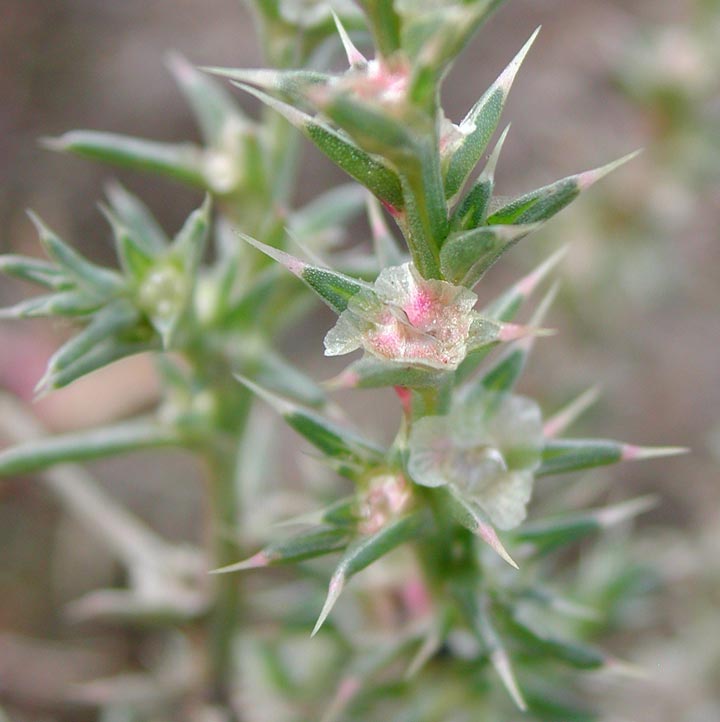
Photo by Max Licher. SEINet Portal Network. 2023. http//:swbiodiversity.org/seinet/index.php. Accessed on July 25.
Family: Amaranthaceae (Amaranth family)
Life form: Annual plant, reproducing by seed, stems are opposite with alternate succulent or semi-succulent leaves that end in a sharp spine. Plants are soft when immature, but become stiff and break off at the root when mature; taproot system (up to 6 ft deep with up to 5 ft wide lateral roots).
Occurrence in New Mexico: Native to semi-arid ecosystems in Europe, Central Asia and Northern Africa, introduced to North America, can today be found in every state except Florida and Alaska
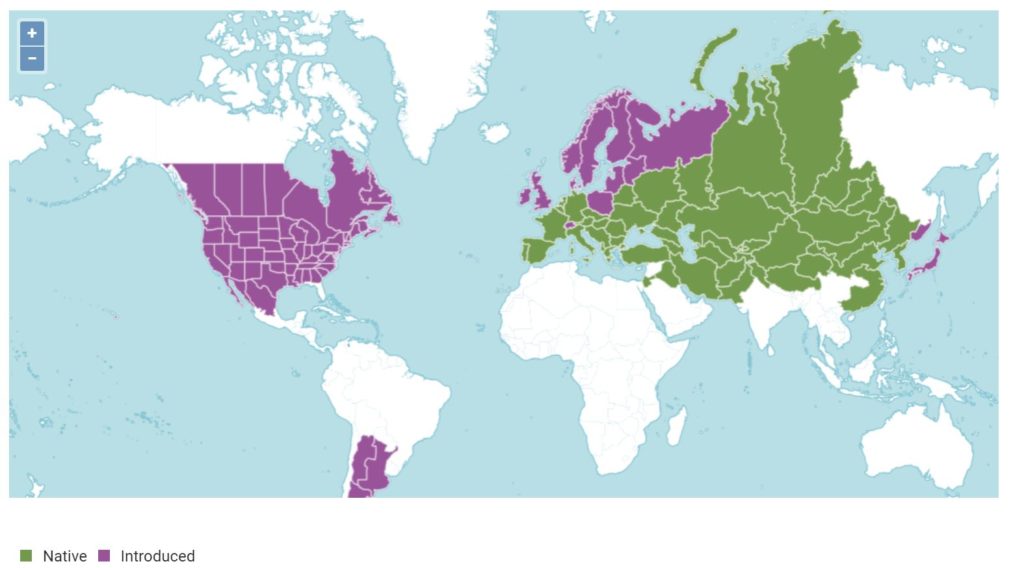
POWO (2023). “Plants of the World Online. Facilitated by the Royal Botanic Gardens, Kew. Published on the Internet; http://www.plantsoftheworldonline.org/ Retrieved 26 July 2023.”
Seed production: Variable, prolific between a few thousand for smaller plants and up to over 250,000 seeds for larger plants (Young 1991), maturing summer or fall
Water conditions: Extremely water efficient
Sun: Shade intolerant
Growing conditions: Initial colonizer of disturbed lands, thriving in arid and semi-arid conditions in a wide variety of ecosystems from sea level to 8,500 ft
Article by Eva Maria Raepple
Tumbleweeds rolling along the roads, piling up several feet high along fences, filling arroyos and gullies are iconic albeit infamous sights, especially in the Southwest of the United States. There are many different plants called tumbleweeds but the Russian thistle (Salsola tragus) certainly tops the list. It is an opportunistic plant of the Amaranth family (Amarantheceae) that can spread quickly in semi-arid to arid ecosystems. A native from southeastern Europe to Central Asia, it likely hitchhiked with flax seeds to the North American continent, arriving in the 1870s in South Dakota (Bernau and Eldredge 2018). With its enormous root system, the Russian thistle is extremely water efficient. Its prolific seed production makes this plant a fantastically opportunistic colonizer in many ecosystems, not rarely causing desperation for those who need to weed endless rows of little sprouts or clear the collected dry balls of grey hard tumbleweeds out of fences and gullies! Yet this infamous invader of the North American continent is not lacking in important ecological benefits and can support humans in a number of ways.
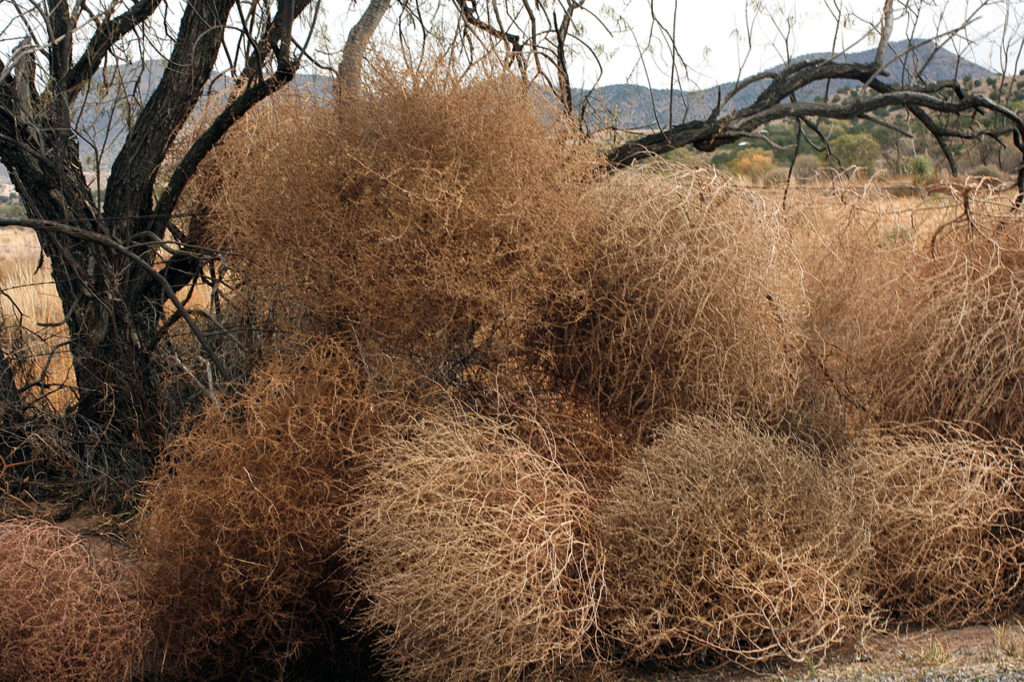
Photo by Russ Kleinman, Western New Mexico University Department of Natural Sciences and the Dale A. Zimmerman Herbarium.
Who would think that this dry tumbling ball with its prickly spines is rich in iron and chlorophyll when young and green? Young plants can be eaten raw or cooked (Tull 2013). Although it is not as tasty as its famous gourmet relatives the cardoon or the artichoke, the young Russian thistles, brined and canned, allowed settlers to survive the brutal years of famine during the Dustbowl in Cimarron County Oklahoma (Egan 2006: pg. 162). Hay production from young tumbleweeds is known to have saved the cattle industry during this desperate dry period in American history (Young 1991). The plant has a history of medicinal uses and has been shown to have the prospect of neuroprotective activity according to recent scientific studies (Murshid, 2022). It also provides habitat for a wide variety of wildlife. Insects and pollinators including bees, flies, moths, and butterflies love the small tiny flowers; some such as the western pygmy blue butterfly (Brephidium exilis) use it as a host for their larvae. The plant feeds and shelters many small herbivores, reptiles, and birds and attracts grazing bison, deer or pronghorn (Bernau et al. 2018).
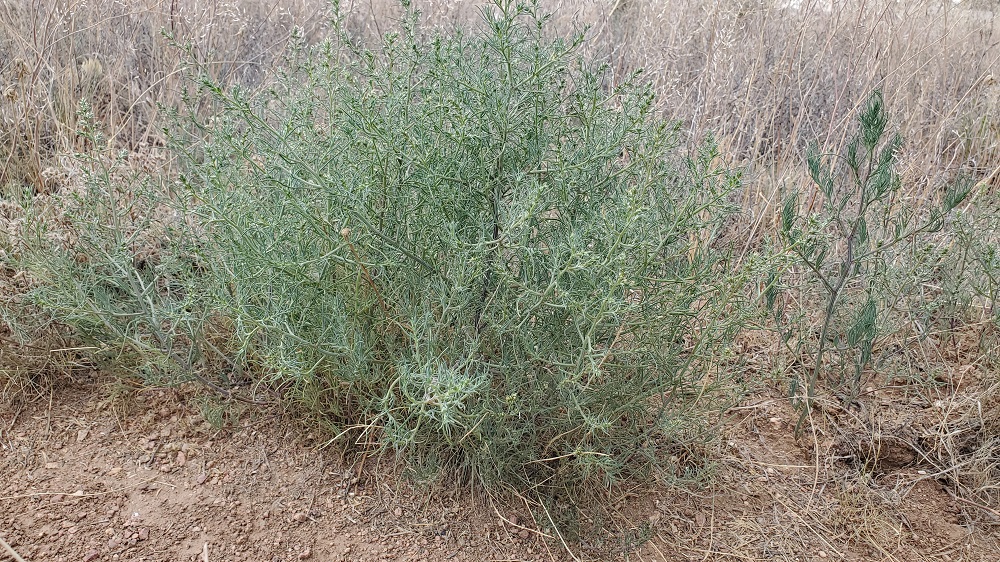
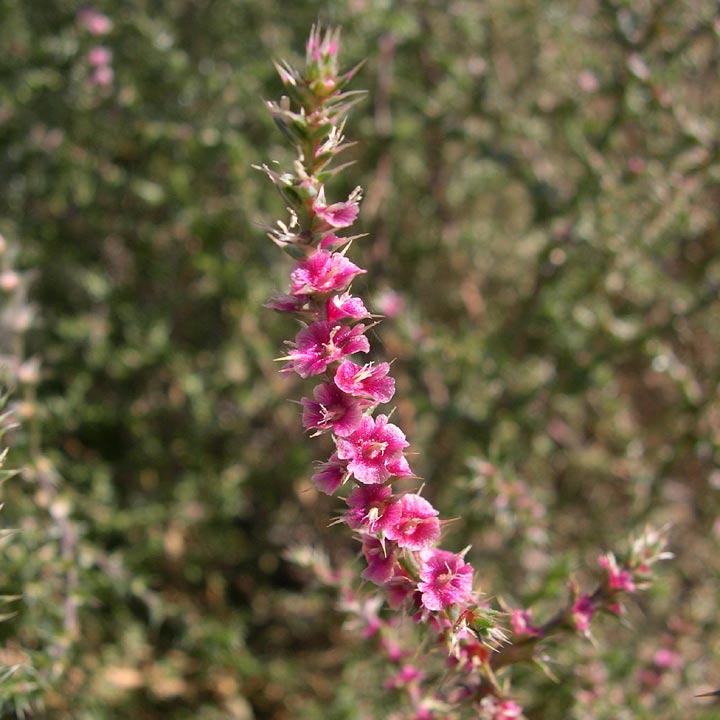
Photo by Max Licher. SEINet Portal Network. 2023. http//:swbiodiversity.org/seinet/index.php. Accessed on July 25.
Perhaps most interesting are the Russian thistle’s qualities as a soil restorer. The plant frequently settles in disturbed, sometimes highly polluted sites where few other plants can survive. Unlike trees and other plants, the Russian thistle does not use mycorrhizal fungi. On the contrary, it feeds mycorrhizal fungi as it dies off, increasing the fungal population and providing the foundation for other succession plants to settle in and begin to re-vegetate an area (Johnson, 1998). Moreover, the Russian thistle’s abilities to inhabit disturbed soils also puts it into a group of plants that can be used to reinvigorate soils, a kind of “hazmat team” that has been shown to potentially clean up toxic heavy metals such as cadmium (Ca), chromium (Cr) and lead (Pb), thereby preparing the ground for other ecosystems to evolve. (Lee Scott, 2010, Guadelupe De La Rosa, 2005).
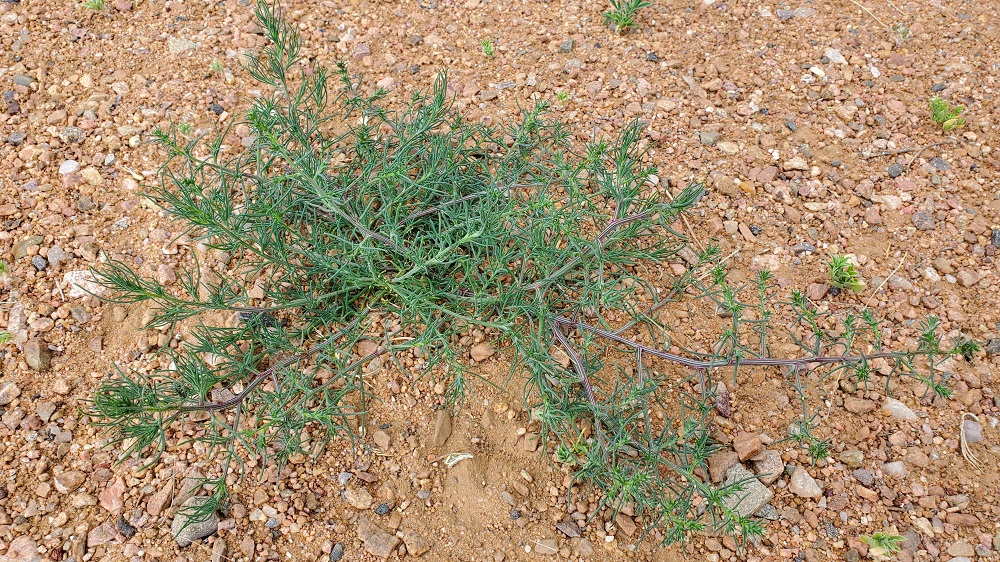
Young tumbleweed plant.
Of course, the Russian thistle, despite its great qualities, does not usually bring about friendly thoughts nor is it kindly embraced by most people. The prickly plant’s ability to rapidly colonize large areas of soils via its tumbling seeds puts it into the category of “invasive species” in the United States, infesting fields and reducing crop yields (Bernau, C. R. and E. P. Eldredge, 2018). The wind driven tumbleweed balls on roads have been cause for car accidents and are highly flammable material if piled up against fences or even houses. No wonder that humans have long worked on controlling its spread. Yet it appears that the plant often outsmarts even our best attempts. Heralds of summer, Russian thistles are remarkable dramatic plants.
References
Bernau, C.R. and E.P. Eldredge. 2018. Plant Guide for. Prickly Russian Thistle (Salsola tragus L.). USDA-Natural Resource Conservation Service, Great Basin Plant Materials Center. Fallon, Nevada 89406. Available from: https://plants.usda.gov/DocumentLibrary/plantguide/pdf/pg_satr12.pdf
Egan, T. 2006. The Worst Hard Time: The Untold story of those who survived the great American Dustbowl. Boston: Houghton Mifflin Co. 162 p.
Guadelupe De La Rosa. 205. Application of Modern Spectroscopic Techniques to Study Heavy Metal Accumulation and Uptake Mechanisms in Tumbleweed. Dissertation. University of Texas at El Paso.
Johnson, N.C. 1989. Response of Salsola kali and Panicum virgatum to mycorrhizal fungi, phosphorus and soil organic matter: implications for reclamation. Journal of Applied Ecology. 35:86-94.
Lee Scott, T. 2010. Invasive Plant Medicine. The Ecological Benefits and Healing Abilities of Invasives. Rochester, Vermont, Toronto: Healing Arts Press. 21.
Mushid, S.S.A. et al. Genus Salsola. Chemistry, Biological Activities and Future Prospective -A Review. Plants 2022, 11, 714. https:// doi.org/10.3390/plants11060714
Tull, D. 2013. Edible and Useful Plants of the Southwest: Texas, New Mexico, and Arizona. University of Texas, Austin. 500 pp.
Young, J.A. 1991. Tumbleweed Scientific American. 264 (3): 82-87.


